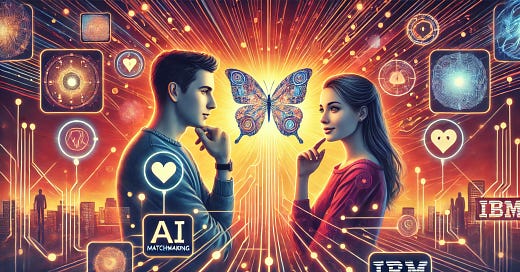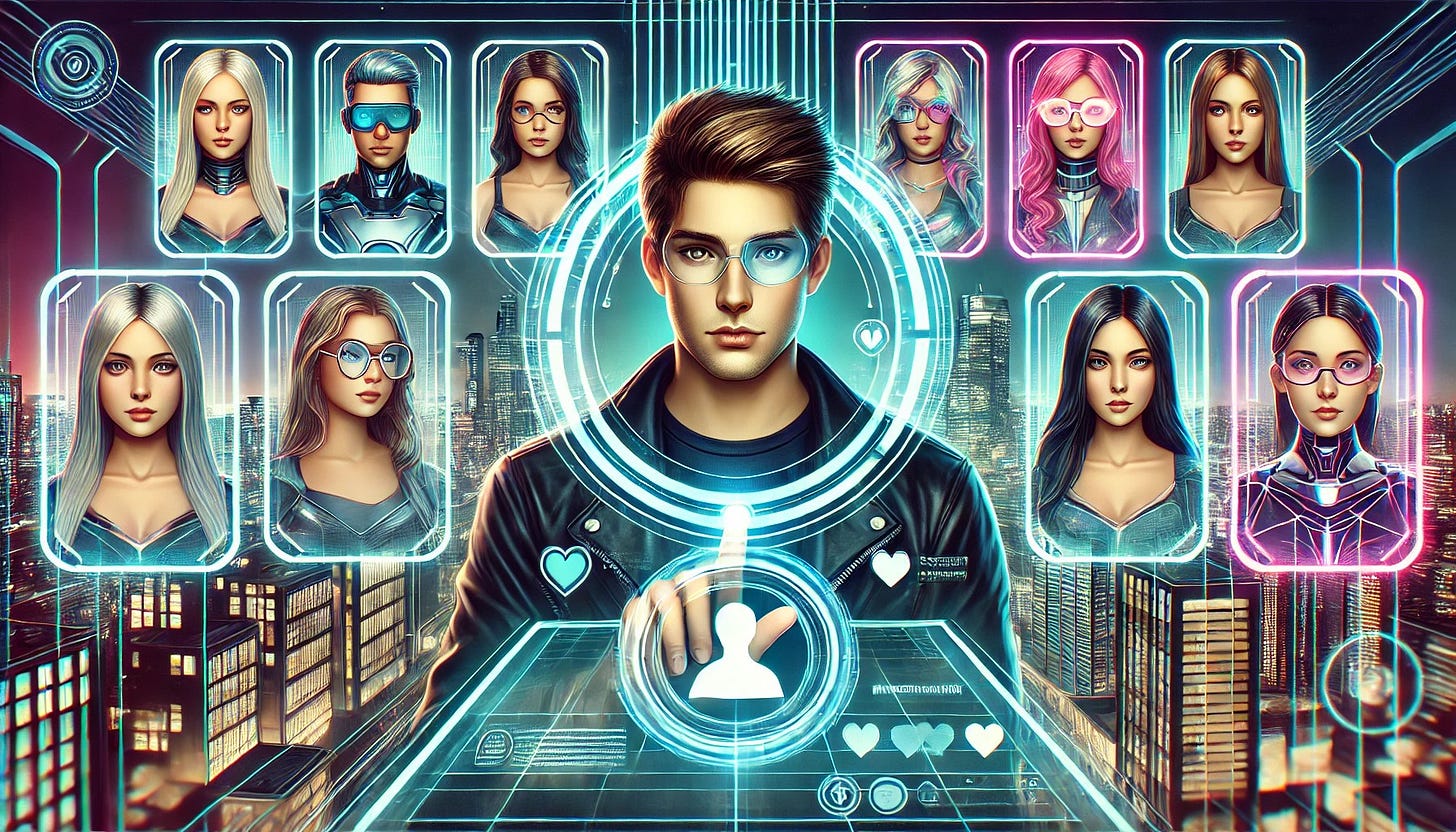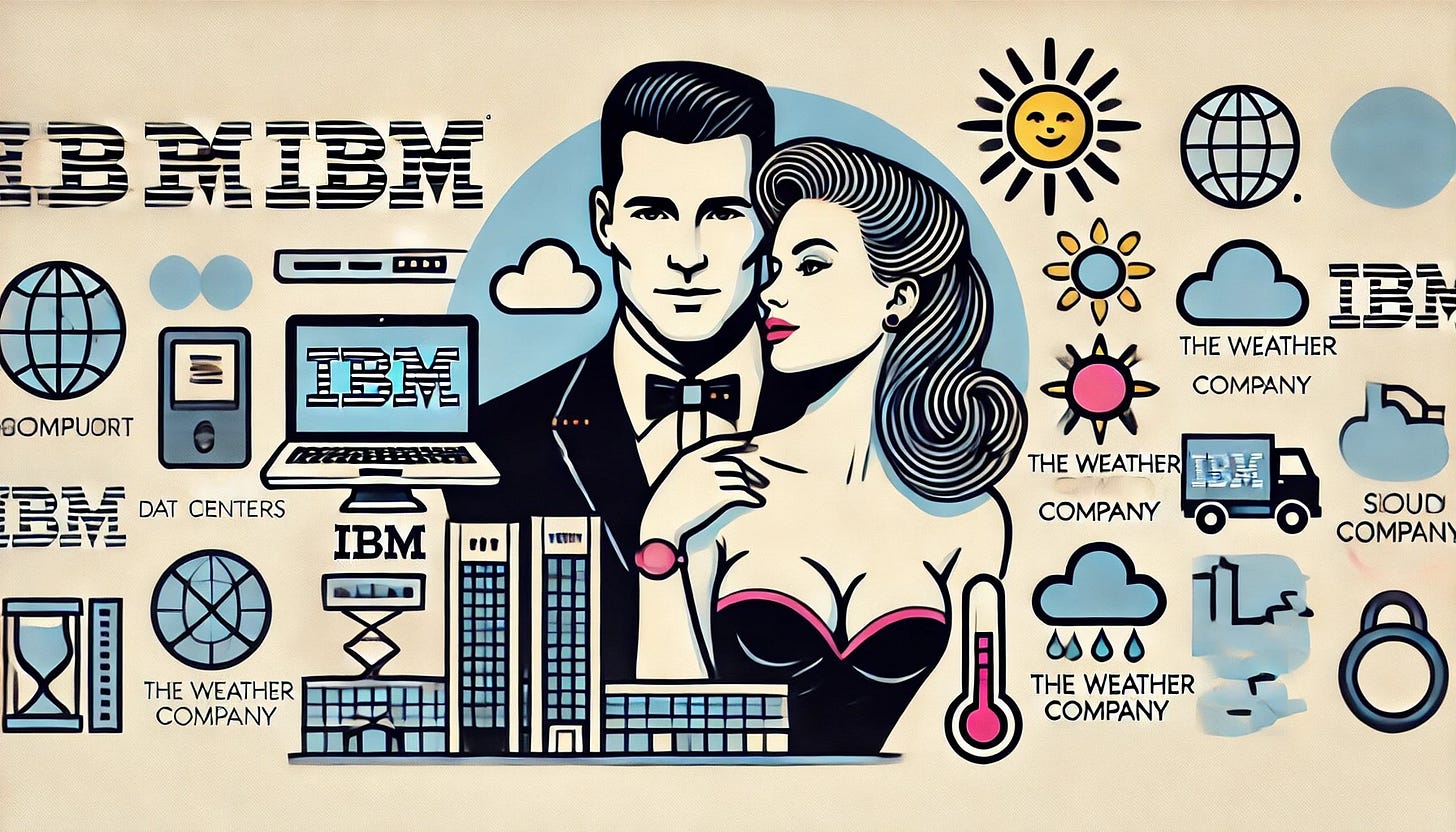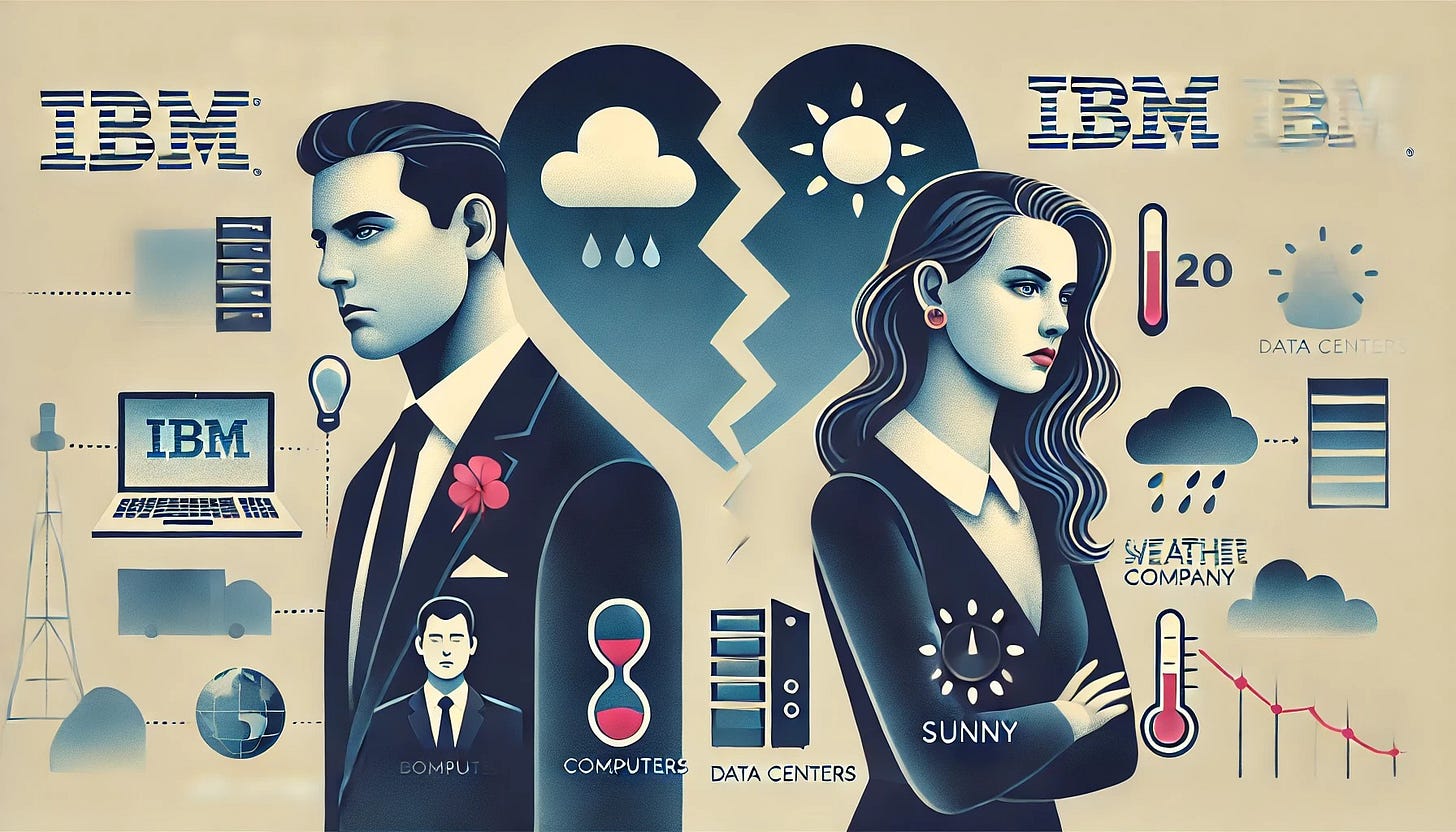Can Artificial Intelligence (AI) really help you find your Soulmate?
Cupid, AI, and the curious case of IBM's acquisition of The Weather Company
If the capitalist Techbro St. Valentine were to recruit for Cupid's job in 2025, then the LinkedIn Ad would most probably read:
Corporation: Matchmaking Inc.
Position: Chief Matchmaking Officer (AI Division)
Location: Remote (Cloud-based preferred)
Experience: 10+ years’ experience in Artificial Intelligence, Machine Learning, and Love Alchemy. Deep expertise in Neural Networks, Deep Learning, Reinforcement Learning, and Predictive Modelling required. Proven track record in deploying Large Language Models (LLMs), Generative AI, and Graph Neural Networks for matchmaking. Knowledge of Cloud Computing and Big Data is a must.
Compensation: Best in class. Complimentary arrows, unlimited cloud storage, and stock options in the Metaverse of Love.
As Dating Apps begin to court Artificial Intelligence (AI), the question that emerges is:
Will this budding romance of Love and AI lead to a long-lasting matrimony? Or, will it end in a messy divorce?
The answer lies in the curious case of IBM's acquisition of The Weather Company in 2015.
Fast forward to 2025. It is a decade since the unlikely acquisition.
John Doe, JD, is swiping on a Dating App while listening to the classic Phil Collins' hit number 'You can't hurry love' on Spotify.
I need love, love to ease my mind
I need to find, find someone to call mine
Can Artificial Intelligence (AI) really help this lonely man, JD, find his Soulmate?
The capitalist Techbro St. Valentine of Matchmaking Inc. says ‘yes’.
Is he really telling the truth, or is it just another case of ‘Corporate AI-washing’?
Let's find out.
Guesstimate of JD's potential Soulmates
Let's guesstimate JD's potential Soulmates in the world.
The global population as on February 10, 2025 was ~8.2 billion.1
Tim Minchin declared in his song “If I Didn’t Have You” that his love was: one in a million. Let's assume this holds true for JD's Soulmates too. If JD’s Soulmates are truly "one in a million", that makes it ~8,200 potential Soulmates worldwide.
Let's further assume that these Soulmates are randomly distributed across the world.
According to Jan 2025 data, 4.2% of the global population is on Dating Apps.
That means probably 4.2% of these ~8,200 potential Soulmates, i.e ~344 potential Soulmates, could be on any of the Dating Apps.
Searching for a Soulmate on Dating Apps- ‘Needle in a Haystack’ Problem
As per Jan 2025 data, 349 million people worldwide use Dating Apps. 2
The most popular Dating Apps are Bumble, Tinder, Hinge, eHarmony, Coffee Meets Bagel, and Facebook Dating. 3
JD now has to sift through ~349 million profiles to find his 344 best matches.
This is like finding a ‘needle in a haystack’. In this case, 344 probable needles!
Now, this is where AI comes into play. AI is increasingly being integrated into Dating Apps to address this "needle in a haystack" problem. It uses techniques like Machine Learning (ML), Neural Networks, Natural Language Processing (NLP), and Computer Vision to find compatible partners amid millions of profiles.
Let’s now understand how AI can play the role of a personal Matchmaker to JD.
AI: the personal Matchmaker
Finding a Love Match involves 3Cs- Connection, Chemistry, and Compatibility. Connection is the initial spark, Chemistry is the flame, and Compatibility the slow-burning fire that keeps a relationship going. AI can play a pivotal role in all the 3C stages.
Gen-AI Assistants can first help JD with his profile creation on a Dating App. They can generate a unique, well-crafted dating profile for JD based on his personality, interests, lifestyle, and dating goals. AI-avatars can then guide him on how to ace the dating game by sharing best practices.
Step 1: Establishing a Connection
AI can help JD connect, or match, with his potential Soulmates.
Now, AI won’t use brute-force algorithm to go through the ~349 million profiles one by one. Instead, it will first use progressive filtering techniques to gradually narrow down the pool of potential matches by applying multiple stages of increasingly specific criteria. It will start with broad filters like age, location, ethnicity, and cultural preferences to eliminate obvious mismatches. AI will then use content-based filtering to assess the profile photos and bios of women and suggest matches. Behavioral filtering will be used to analyse JD’s behaviour, such as interaction history and engagement patterns with suggested profiles, to further refine the recommendation system. Personality assessments data and psychometric data will be used to recommend compatible matches. These data would have been gathered during profile creation. As JD interacts with the app, AI will refine its suggestions using feedback loops and real-time data, ensuring more relevant matches are shown to him over time. By applying these techniques AI can make the searching for a ‘needle-in-a-haystack’ process more efficient and personalized as the system learns from JD’s preferences and behaviour.
Step 2: Checking for Chemistry
AI can then check if JD has chemistry with the profiles he matches with.
Let’s say the Dating App matches JD with a lady named Jane Roe (JR). AI will use predictive modelling to analyze patterns across texts, voice messages, audio calls, and video calls and predict if there is mutual attraction between them.
AI will initially analyze text exchanges between JD and JR to measure message reciprocity, linguistic style compatibility, and engagement levels. It will conduct sentiment analysis to analyze the tone, mood, and language used in their text-based interactions to gauge if their relationship is deepening. Gen AI-bots will help generate pick-up-lines, suggest date ideas, pen love letters etc., to keep the conversations flowing easily. If their early text interactions progress to voice messages or calls, AI will analyze vocal pitch variations, speaking rhythms, and laughter to assess excitement and alignment. AI-powered facial recognition and gesture tracking, that use Computer Vision, will evaluate eye contact, micro-expressions, and body language to detect subconscious signals of attraction. These techniques can ensure that the Dating App checks for chemistry that is far deeper than surface-level interactions.
Step 3: Checking for Compatibility
AI can use machine learning to analyze past relationship data, user interactions, and successful matches to check if a matched pair have the compatibility to form a lasting relationship.
Predictive compatibility models will assess long-term relationship potential based on various parameters like shared values, political beliefs, religious views, common interests, lifestyle preferences, and dating goals. Natural Language Processing (NLP) will examine message tone and vocabulary to detect alignment in personality and beliefs. Sentiment analysis will further evaluate increased interest, active listening, mutual respect, empathy, etc., identifying early signs of conflict or strong connection. AI will also analyze conversational patterns to predict potential red flags and suggest strategies for healthy communication. By combining behavioral insights with real-time user feedback, AI can continuously improve match accuracy, making it a powerful tool in fostering meaningful, longer-lasting relationships.
While AI can definitely play a pivotal role in online matchmaking, it has few limitations.
Its limitations will become clear once we study IBM's acquisition of The Weather Company.
IBM's acquisition of The Weather Company
Like I had mentioned earlier it was an unlikely acquisition. The industry pundits did not see it coming.
IBM acquired The Weather Company in 2015 when it was foraying into the Cloud and AI business.4 The acquisition was a marriage of computational power with data. The technology behemoth believed that by combining its advanced analytics platform, IBM Watson, with the huge weather data of The Weather Company5, it would be able to predict the weather more accurately. It planned to monetize these 'accurate' weather predictions to then drive tangible business decisions for its clients across industries like media, retail, agriculture, commodities and so on.
But IBM probably hadn't reckoned that it will drive into an obstacle: the 'Butterfly Effect'.
The 'Butterfly Effect'
Can the flap of a butterfly’s wings in Brazil set off a tornado in Texas?
-Edward Lorenz, an MIT meteorologist
The 'Butterfly Effect' is a concept within 'Chaos Theory' that illustrates how small variations in initial conditions can lead to significant and unpredictable outcomes in deterministic non-linear systems.6 The Weather is a deterministic non-linear system: it is a deterministic system because it is governed by physical laws, and it is a non-linear system because small changes in input may produce disproportionate changes in output. Even infinitesimal changes in the starting conditions of weather models can result in vastly different forecasts. The atmosphere's inherent complexity and the multitude of interacting variables contribute to this unpredictability. So, yes, the flap of a butterfly’s wings in Brazil can set off a tornado in Texas. This implies that despite advancements in computational power and data collection, accurately predicting weather over long periods still remains challenging.
IBM sells off The Weather Company
IBM silently sold The Weather Company to private equity firm Francisco Partners in August 2023.7 Their marriage lasted 8 years. One more than the proverbial 'seven-year itch'!
Love beats Weather in complexity
The Weather is a deterministic non-linear system; love is a non-deterministic non-linear system.
Love is much more complex than the weather. Unlike the weather that is governed by physical laws and hence is deterministic, love is not governed by any scientific law making it non-deterministic. It is ruled by what scientists call ‘randomness’ and Hallmark romcom directors call ‘serendipity’.
IBM Watson could not predict the Weather - a deterministic non-linear system- in 2015. It is highly unlikely that AI can predict the course of Love - a non-deterministic non-linear system- in 2025.
AI can establish a Connection between a potential couple, it can check for Chemistry, and it can even assess Compatibility: but it can't make someone fall in love or guarantee that a relationship will endure forever. For Love is a curious cocktail of pheromones, oxytocin, and serendipity. Even the best Alchemist cannot concoct a love potion that induces ‘butterflies in the stomach’.
Just like the flap of a butterfly’s wings in Brazil can set off a tornado in Texas, the ‘butterflies in the stomach’ of JD in the United States can make him fall for someone halfway across the world in China—regardless of the state of US–China relations!
This brings us back to the Phil Collins' hit number that JD was originally listening to while swiping on Dating Apps.
The rest of the lyrics goes something like this ...
But Mama said
"You can't hurry love
No, you just have to wait"
She said, "Love don't come easy
It's a game of give and take" (can't wait)
"You can't hurry love (ooh, until that day)
No, you just have to wait
You got to trust, give it time (love don't come easy)
No matter how long it takes"
Phil Collin's Mama may just be right.
The capitalist TechBro St. Valentine may assert that AI is Cupid's new Arrow in investor meets, industry conferences, and company town halls. But, the truth is far from it.
AI can get John Doe only a date. It cannot find him a Soulmate.
Because Love, like the Weather, can't be predicted.
And 'you can't hurry Love'!
References:








It is an excellent piece, Sylvia. As an engineer I would apporach the match making with a similar process but as a person who married the one I loved, I would say the process would fail spectacularly.
The techbros have a problem. They think every process can be codified. Yes it may be, but the amount of variables involved makes it impossible to get a reliable output. Thus flights are made mostly successful but they still fail when edge cases happen.
Rather than creating these unpredictive algos both tech bros and sis should go out, travel and have dinners with each other. They will learn more about human connections that way. The butterfly effect can be useful if we trust that chaos will always exist and we need to ride on them and that is the only way to live and love.
Our parents were our AI substitutes in matchmaking. They tried and used their intuitive and cultural algorithms and forced love on the prospective partners and we submitted. Our children now have asserted that butterflies don't listen to anyone. They flutter at their own will least of all in somebody's stomach.